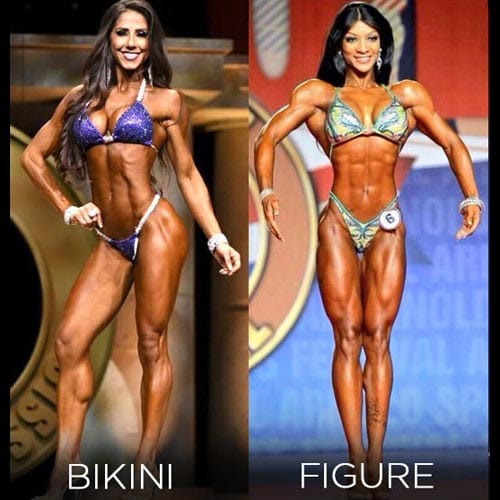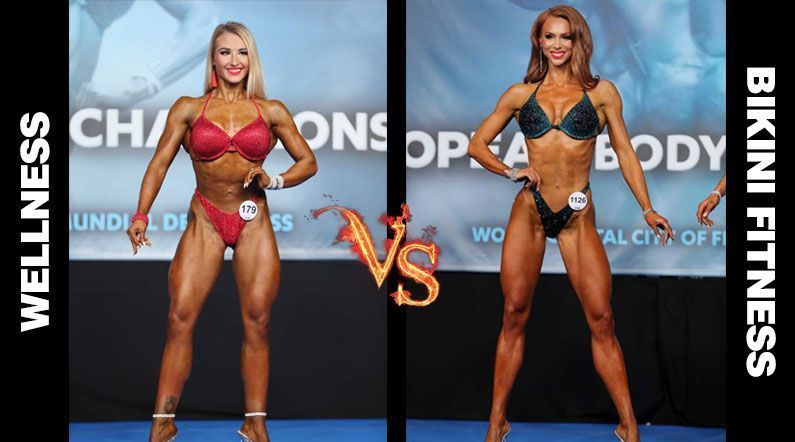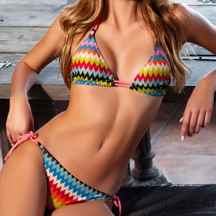Content Menu
● Introduction
● What is a Bikini Competition?
>> The Importance of Presentation
● What is a Wellness Competition?
>> The Role of Body Composition
● Key Differences Between Bikini and Wellness Competitions
● Preparing for Bikini vs. Wellness Competitions
>> For Bikini Competitors:
>> For Wellness Competitors:
● The Role of Swimwear in Competitions
>> Swimwear Considerations:
● Nutrition Strategies for Success
>> Nutrition for Bikini Competitors:
>> Nutrition for Wellness Competitors:
● Mental Preparation
● Conclusion
● Frequently Asked Questions
>> 1. What is the main difference between bikini and wellness competitions?
>> 2. What should I focus on when training for a bikini competition?
>> 3. What is the ideal body fat percentage for wellness competitors?
>> 4. Can I switch from bikini to wellness competitions?
>> 5. How important is swimwear choice in these competitions?
Introduction
The world of fitness competitions is diverse, with various categories catering to different physiques and aesthetic preferences. Among these, bikini and wellness competitions have gained significant popularity. This article delves into the distinctions between these two categories, exploring their requirements, judging criteria, and how competitors can prepare for each.

What is a Bikini Competition?
Bikini competitions focus on an hourglass figure, where competitors are judged based on their overall appearance, including muscle tone and stage presence. The key characteristics of bikini competitors include:
- Physique Requirements: Competitors should have a well-defined but not overly muscular physique. The emphasis is on a small waist and balanced proportions.
- Judging Criteria: Judges look for muscle definition, symmetry, conditioning, and presentation. A bikini competitor typically has a body fat percentage around 15-18% on show day.
The Importance of Presentation
In bikini competitions, presentation is crucial. Competitors must master their posing techniques to showcase their physique effectively. This includes:
- Posing Techniques: Posing not only highlights muscle definition but also conveys confidence and personality. Competitors practice various poses to find the ones that best accentuate their strengths.
- Makeup and Hair: Many competitors invest time in professional makeup and hairstyling to enhance their overall look on stage. A polished appearance can significantly impact judges' perceptions.
What is a Wellness Competition?
Wellness competitions cater to those with a more muscular lower body while maintaining a well-defined upper body. This category is ideal for individuals whose natural body structure includes more developed glutes, thighs, and hips. Key aspects include:
- Physique Requirements: Competitors in wellness competitions are expected to have fuller lower bodies with more muscle mass compared to bikini competitors. The focus is on curvier and athletic physiques.
- Judging Criteria: Similar to bikini competitions, judges evaluate muscle mass, proportion, symmetry, conditioning, and presentation. However, the criteria for muscle mass are slightly more lenient in wellness competitions.
The Role of Body Composition
In wellness competitions, body composition plays a significant role in how competitors are judged. Unlike bikini categories where a leaner physique is preferred, wellness allows for more muscle mass in the lower body while still maintaining an overall aesthetic appeal.
Key Differences Between Bikini and Wellness Competitions
Understanding the differences between bikini and wellness competitions can help aspiring competitors choose the right category for their physique.
| Feature | Bikini Competition | Wellness Competition |
| Muscle Development | Less muscular; defined shoulders | More muscular; fuller lower body |
| Body Fat Percentage | 15-18% | 12-15% |
| Focus Areas | Small waist, balanced proportions | Developed glutes, thighs, hips |
| Presentation Style | Emphasis on stage presence | Similar but highlights lower body |
| Overall Aesthetic | Hourglass figure | Curvier athletic physique |
Preparing for Bikini vs. Wellness Competitions
Preparation for both types of competitions involves rigorous training and dietary discipline. Here are some tips for competitors:

For Bikini Competitors:
1. Training Focus: Emphasize shoulder workouts to create a V-taper appearance while maintaining leg definition.
2. Dieting Strategy: Aim for a caloric deficit to achieve a lower body fat percentage while maintaining muscle mass.
3. Posing Practice: Work on stage presence and poses that highlight your physique's strengths.
4. Cardio Regimen: Incorporate cardio exercises into your routine to help burn fat while preserving lean muscle mass.
For Wellness Competitors:
1. Training Focus: Incorporate leg workouts that target glutes and thighs to develop fuller lower body muscles.
2. Dieting Strategy: Maintain a balanced diet that supports muscle growth while keeping body fat within the desired range.
3. Posing Practice: Practice poses that showcase your curves and overall athleticism.
4. Strength Training: Focus on compound movements like squats and deadlifts to build strength in the lower body.
The Role of Swimwear in Competitions
Swimwear plays a crucial role in both bikini and wellness competitions. Competitors often choose custom designs that enhance their physique while adhering to competition guidelines. High-quality swimwear can boost confidence on stage.
Swimwear Considerations:
- Material Quality: Look for durable fabrics that provide comfort and support during performances.
- Design Features: Choose styles that flatter your body shape and highlight your best features.
- Customization Options: Consider custom designs that allow you to express your personal style while meeting competition standards.
Nutrition Strategies for Success
Nutrition is a vital component of preparation for both bikini and wellness competitions. Here are some dietary strategies tailored to each category:
Nutrition for Bikini Competitors:
1. Macronutrient Balance: Focus on high protein intake to preserve lean muscle while reducing carbohydrates leading up to the competition.
2. Meal Timing: Implement strategic meal timing around workouts to optimize energy levels.
3. Hydration Practices: Stay hydrated but be mindful of water intake as competition day approaches; many competitors reduce water intake to achieve a tighter look.
Nutrition for Wellness Competitors:
1. Increased Caloric Intake: Wellness competitors may require slightly higher caloric intake due to increased muscle mass goals.
2. Healthy Fats: Incorporate healthy fats into meals to support hormone production essential for muscle growth.
3. Pre-Competition Carbing Up: Some athletes implement carb-loading strategies before the competition to enhance fullness in their muscles.
Mental Preparation
Mental preparation is just as important as physical training when it comes to competing in either category:
- Visualization Techniques: Many successful competitors use visualization techniques to imagine themselves performing well on stage.
- Stress Management Strategies: Engage in activities such as yoga or meditation to manage pre-competition anxiety effectively.
- Support Systems: Surround yourself with supportive friends or fellow competitors who understand the challenges of preparing for shows.
Conclusion
Both bikini and wellness competitions offer unique opportunities for athletes to showcase their hard work and dedication to fitness. By understanding the differences between these categories, competitors can make informed decisions about which path aligns best with their physique goals.
Frequently Asked Questions
1. What is the main difference between bikini and wellness competitions?
- The main difference lies in the level of muscle development required; wellness competitors have fuller lower bodies compared to bikini competitors.
2. What should I focus on when training for a bikini competition?
- Focus on shoulder workouts for a V-taper appearance while maintaining leg definition.
3. What is the ideal body fat percentage for wellness competitors?
- Wellness competitors typically aim for a body fat percentage between 12-15%.
4. Can I switch from bikini to wellness competitions?
- Yes, many athletes transition between categories based on their physique changes over time.
5. How important is swimwear choice in these competitions?
- Swimwear choice is crucial as it enhances your physique presentation and boosts confidence on stage.

































































